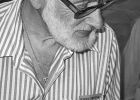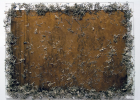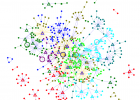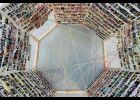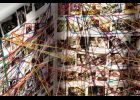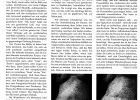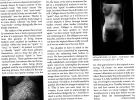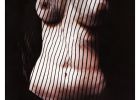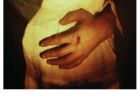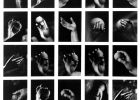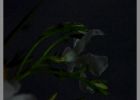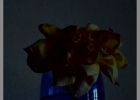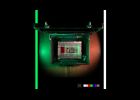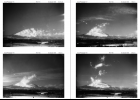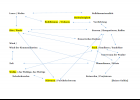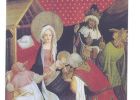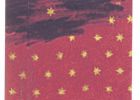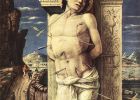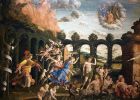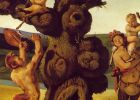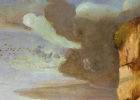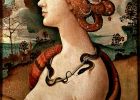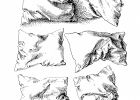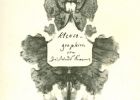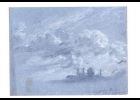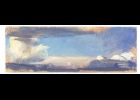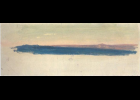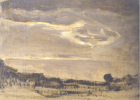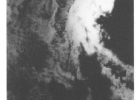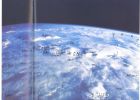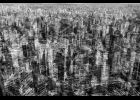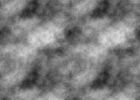Flusser Studies 29 – 2020 / Centennial Three-Part Issue
Part I: Vilém Flusser May 1920 – May 2020
Fact and Fiction – Design as a Search for Reality on the Circuit of Lies
Chasing Flusser, Chasing Subjectivity: The Resistance of Family Photographs
Functionaries of the Internet: sharing and posting misinformation online
Part II: Buddhism, Yoga, Sand, Clouds, Pixels and Bits
Entering the Black Box: Flusser and Indian Philosophy
The aim of this paper is to highlight the most important thoughts on Vilém Flusser’s connections to Indian Philosophy. We analyze his works such as The History of the Devil and Vampyroteuthis Infernalis and correspondences with authors such as Dora Ferreira da Silva or Alex Bloch in order to trace back Indian philosophical influences on his writings, with a specific focus on Yoga Philosophy. The topic ebbs and flows in Flusser’s life: at times he praises the Eastern Wisdom, sometimes he opposes it. Therefore, we try to answer the following questions: What was Flusser’s personal approach to Yoga, and how is its influence evidenced in his writings?
Mountains and Clouds: Flusser’s Buddhism
Flusser encountered Zen Buddhism in the 1950s through his friend Alex Bloch who was assistant to a Zen monk. What would this mean for Flusser’s thinking and writing? This essay engages in the contradictory project of exploring Flusser’s Buddhism both from within his writing and from the outside, through Buddhist texts Flusser would not have read. Flusser’s experiences with meditation and Buddhist thought are described in autobiographical passages of Groundless and The History of the Devil, including some unusual moments of “enlightenment.” How did these linger in Flusser’s philosophical speculations? Flusser’s phenomenological essay “Mountains” from Natural:Mind is read against the work of Chinese poet Du Fu and Zen master Eihei Dogen, and the distinction between nothingness and emptiness is considered.
Die Dimension der Leere. Vedanta und Buddhismus in Vilém Flussers Das Zwanzigste Jahrhundert und Bodenlos
This short essay explores some of the connections between Vilém Flusser’s study of eastern philosophy in the 1940s and 1950s and his later notion of zero dimensionality. In his first book, Das Zwanzigste Jahrhundert, he pointed to a theoretical convergence between the Indian Vedanta, Buddhism and modern natural sciences. In his autobiography, Bodenlos, written in the early 1970s Flusser reevaluated his former interest in oriental philosophy in highly critical terms. However, despite this attempt at distancing, some of the notions from Das Zwanzigste Jahrhundert infiltrated his late vision of an emerging universe of technical images.
Wind and Desert
Two of the central nodes in Vilém Flusser’s metaphorical net that this part of Flusser Studies is trying to explore are the wind and the desert, which are not only linked to each other but also to other terms. The wind is a metaphor of the communication revolution. It penetrates into our homes and unsettles our habits, turning us into nomads. It is the immaterial ground on which nomads live and their very reason of being. Some nomads, like the Jewish tribes from the Bible, lived in makeshift tents and led an existence in Bodenlosigkeit, always on the move. Furthermore, the ephemeral sand dunes are related to Flusser’s notion of artificial worlds made out of dots, bits and pixels, composite worlds that resemble swarms and clouds.
Sand
The following is an excerpt from Anne Popiel’s book Of Pixels and Particles. The digital connection between nature and art in Vilém Flusser’s philosophy . Published in 2012, it explores metaphorical connections between sand grains, droplets, bits, pixels and particles, linking the ocean of the Vampyroteuthis to moving sand dunes and the screen of the computer. “Flusser’s response to groundlessness is to create one’s own ground out of thin air, modeled by oceans, squids, spider webs and sand” (Popiel 2012: 14). His “metaphors translating sand grains into pixels and wind turbulence into algorithms highlight the digital structures present in both nature and computer technology that create an environment conducive to the spontaneous emergence of new order” (ibid.:54).
„Eine Wolke von Zukunft“. Zur nubigenen Einbildungskraft in Vilém Flussers Werk
This essay starts out from Flusser’s use of the metaphor of the cloud as a possible representation of our present condition. Our identity and the world around us have lost all solidity and turned into groundless swarms of particles. This vision accompanies the short history of the cloud that follows, moving from its conception as a changeable veil masking the true light of inner truth, to an assemblage with frayed and constantly changing outlines, a formless but significant stain, and a field of possibility. As Flusser points out, when dealing with present day digital technology, one has the impression that our imagination (Einbildungskraft) has emigrated from our brains and become independent so that one can have a look at one’s own dreams. One would have to enter into a kind of dialogue (Zwiegespräch) between our own imagination and the one that we have been feeding into the computer, in order to pave the way for a jump into a completely new form of Einbildungskraft.
Spotlyrics / NonDigitColors
The NonDigitColors project is based on a text by Vilém Flusser from 1991, “The Emigration of Numbers from the Alphanumeric Code.” . In this text, Flusser evokes, among other things, the fall of the alphabet: “The alphabet is about to be crushed by numbers on the one hand and images on the other hand, as by a pair of pliers.” The RGB (red-green-blue) system that determines color on most computer screens is hexidecimal: from sixteen available characters, it uses a six-character string to deliver any individual color, preceded by a pound sign (#). The project NonDigitColors uses a code of 6 letters: a, b, c, d, e, f to make up character strings. There are 46656 different permutations, or words or signs that become color values by the addition of the # sign. NonDigitColors are computer color codes that, paradoxically, do not consist of numbers. When the numbers “emigrate” from the hexadecimal code, only the “non-digital” codes remain.
The depiction as code establishes color as a linguistic construct. The project Spotlyrics refutes Flusser’s above-mentioned assertion and claims a place for letters in a modern, computerized, future-oriented world.
Part III: Open Contributions
The Fourth Meaning of the Image: Flusser’s Invitation to Envision the World
This short essay is composed of excerpts from the doctoral thesis entitled Image as Articulation of Thought. It focuses on a few inputs by Vilém Flusser on the subject of the technical image and the necessity of becoming active participants in the illusory world we are now living in. For this to happen, we must step out of our condition of being functionaries and become (en)visionaries. That is, we must step out of a linear model of thinking into a superficial one, one that is based entirely on images.
Por uma fenomenologia do corpo
This article seeks to respond to Flusser’s call for a “phenomenology of the body” by constructing a method. The paper has four sections, corresponding to four aspects of the project: the first section examines Flusser’s letter to Dora Ferreira da Silva, in which he talks about the urgent need for a phenomenology of the body; the second identifies the necessary elements for the realization of a phenomenology of the body along three axes: theory, form and practice; the third section considers the ways academic territories would have to be redefined to accommodate a phenomenology of the body from a Flusserian perspective ; finally, the fourth section takes other, newer phenomenologies of the body into consideration in an effort to grasp the urgency of Flusser’s request.
Rethinking Interology with Flusser
Motivated as much by a deep concern with the rapidly evolving human condition as by intellectual curiosity, this article reveals the problem-driven and futurological nature of Flusserian interology [Deleuze]. It proposes that compared to traditional ontology, the notion of interality and the dynamics of interology offer us a more adequate way of thinking through our situation in the here and now and in the immediate future. The secondary motive is to turn Flusser’s media philosophy into a pointillist verbal art, a techno-ethics, and an intertopia befitting the digital era.
Flusser and Descartes. The Unremitting Mindfulness of Thinking and Being
Of all modern scholars, Descartes is probably the one who has met with most criticism, and even though his formulation of the cogito sounds pretty obvious, Hobbes, Locke, Leibniz, Spinoza, Hume, Kant, Nietzsche, Heidegger, Sartre and Žižek have repeatedly tried to poke holes in his ideas. The lifelong effects of the Cartesian doubt worried Vilém Flusser too. To him, Cartesianism is Christianity through and through. What exactly, in Flusser’s view, is so unacceptable about the Cartesian doubt, then? Why does Flusser identify Descartes with Christianity? Can we appreciate Flusser’s concern with the Cartesian doubt without losing the excitement and intimacy of grappling with Descartes’ metaphysics? Of course, Flusser’s critique is not mainstream; and we can even hear traces of Heidegger’s voice in the background. Still, Flusser’s objection is unique and interesting, making it a refreshing alternative in the scholarly discussion of Descartes. One aim of the paper is to turn the sword of Flusser’s critique of the Cartesian doubt against Descartes’ own detractors.
Libertad y poshistoria en la filosofía de la fotografie de Vilém Flusser
The object of this research is to trace Flusser’s thoughts on freedom and history as they appear in his philosophy of photography. The investigation focusses on the function of the author of the photograph in relation to apparatuses and programs. It extends, as I will try to show, to the activity of the spectator and of everyone who interacts with images. I follow Flusser’s methodology, which is to relate the philosophy of photography to the theory of games. And that's why I speak about the player, the toy and the game involved in photography. I think Flusser's main inspiration was Wittgenstein of the Tractactus and his theory of the emancipation of meaning from truth or factual falsity. Here I find the ontological key to his philosophy of photography as a philosophy of freedom.
